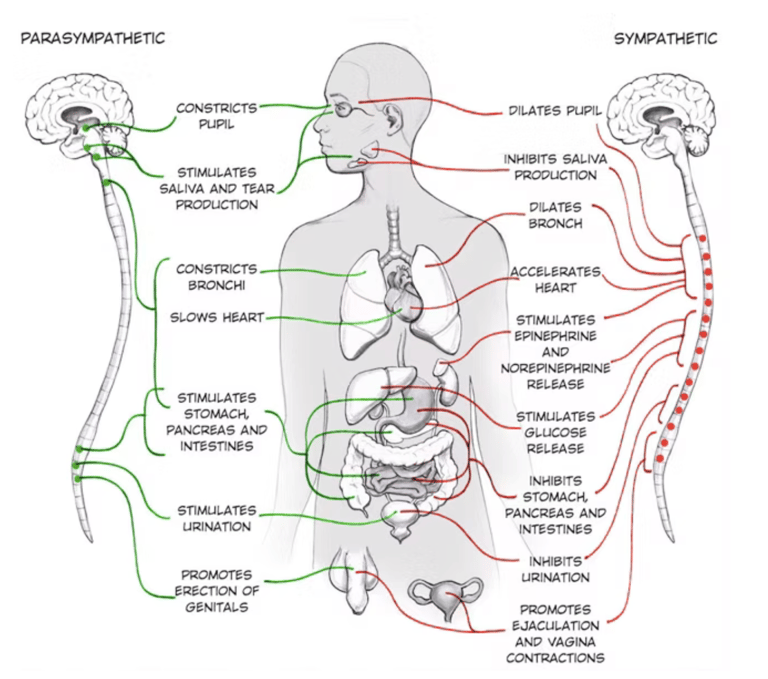Guiding Light MHS
What is Trauma?
Trauma
TRAUMA
1/25/20234 min read


Biology of Trauma
It is very common to hear someone say that they are “different” having experienced a traumatic situation. This statement is true, all the way down to the person’s biological functioning and responses. Trauma activates the sympathetic nervous system. The sympathetic nervous system is an operating system in your body, which is responsible for activating your flight-or-fight response. During moments of stress, physical activity or danger, your brain activates the sympathetic nervous system; which prepares you to fight the situation or flee from it. As your stress or activity levels increase, your sympathetic nervous system exhibits greater activity as it redirects bloods to throughout the body. The following are signs that your sympathetic nervous system may be activated: increased heart rate, increased breaths per minute, enlarged pupils/ greater eyesight, and sweating. Other bodily functions (such as digestion and the need to urinate) may be slowed down and become less salient. This is your body’s response to actual, perceived and recollected stress.
It is important to note, that trauma affects everyone differently. Trauma symptoms, severity and length of exposure are key features that vary person-to-person; consequentially the needed coping mechanisms to reduce and ultimately halt the stress responses will also differ person-to-person. Levels of needed support may also different from person-to-person. It is common for those who have experienced trauma, to ask for support from their family, friends, colleagues, counselors, employers, spiritual and cultural leaders. Trauma symptoms may be short-term or long-term depending on each individual’s protective factors. This is why it is important to work with a therapist who is familiar with your background, presenting symptoms, progression through symptom management, as well as your goals for the future.
Mental Health Considerations Related to Trauma
Triggers and flashbacks are two of many areas of consider for individuals exposed to trauma. A trigger is a stimulus that elicits an emotional or behavioral response. For example, the smell of food cooking is a trigger/ stimulus that elicits you to prepare to eat dinner; seeing 4:30pm on the clock is a trigger/ stimulus that elicits excitement because the workday will end soon; seeing your spouse make an angry facial expression is a trigger/ stimulus that elicits nervousness of an upcoming dispute. In regards to trauma, a trigger is a stimulus that makes the individual recall details of the event. Triggers may be auditory (sound), visual (sight), olfactory (smell), taste, kinesthetic (movement), dates, season, authority figures and geographic locations.
A flashback is when someone thinks about memories of the past, and the thoughts are so emotionally charged, that it feels like the event is happening all over again. For example, you may recall the moment the time your spouse proposed, or the day a loved one performed a very kind gesture for you. If you ever think of memories like that, you’ll notice physiological changes; you start to smile, your facial muscles soften, you feel happy and lighter. In regards to trauma, the emotionally charged flashbacks makes it seem like the individual is re-living that horrible event all over again. Flashbacks are typically brief, but the presence and processing of these stressful and emotional memories, tends to activate a stress response that can last for hours.
Another area of concern when it comes to trauma is maladaptive coping. It is understandable that not everyone has the needed support and resources to recover from trauma in a healthy and effective manner. It is oftentimes true that individuals exposed to trauma engage in risky behaviors such as self-medicating. Research shows a strong relationship between trauma and substance abuse, which means that you are more likely to misuse alcohol and other drugs if you have experienced some sort of trauma in your life. Studies show that people typically begin using substances shortly after the trauma occurs; and the substances are used for the purpose of masking and/or reducing the physical, mental, emotional, and social impact that occurs with traumatic stress responses. On the other hand, individuals who regularly misuse alcohol and other drugs are more likely to be susceptible to trauma, because the substance use places them in high risk situations. It is also important to mention that some people seem to recover from trauma in a relatively short period a time. However, if said person who were to have adapted maladaptive (unhealthy or risky) coping skills for managing stressful situations, they become at greater risk of developing a trauma-related or other behavioral health disorder. This is why finding a best-fit therapist is critical. Engaging in psychotherapy, talk therapy, cognitive-behavioral therapy and motivational interviewing are great strategies for processing and resolving trauma in a healthy way.


For a long time, professionals and practitioners considered trauma to be a single, unexpected, catastrophic event that is typically unlikely to occur. For example, we considered events such as war, mass shootings, natural disasters as trauma. The problem with this old paradigm is that it left a large gap of unidentified situations and events, which had an equal if not greater effect on individuals. Within the last recent years, the mental health paradigm has shifted in regards to what is included as a ‘trauma.’ Today, we consider trauma to be in any event that reproduces a distinct emotional stress response that is characterized by all traumas. This distinct emotional stress to trauma is commonly presented as nightmares, dissociative responses (such as flashbacks and maladaptive daydreaming), involuntary thoughts regarding the event, avoidance of triggers/ reminders, strained relationships, feeling a sense of denial or shock, intense prolonged distress, resistant negative emotional state, diminished interest and participation in regular activities, and physical symptoms (such as headaches, nausea). The significance of the reclassification of trauma holds its importance in how clients are treated. As of today, other horrible events such as car accidents, rape, assault, abuse, adverse childhood experiences, involvement with the justice system, sickness, unexpected death and so on or also considered traumatic events for clients. Therefore, practitioners are better able to assign the correct level of care, a more accurate understanding of how the event is impacting the client, as well as assign the most effective and best-fit treatment plan.
Support
Guiding individuals through life's emotional challenges effectively.
Diamond@GuidingLightMHS.org
Phone number: (770) 740-7440
Copyright ©2025 Guiding Light Mental Healthcare Services LLC | All rights reserved.
